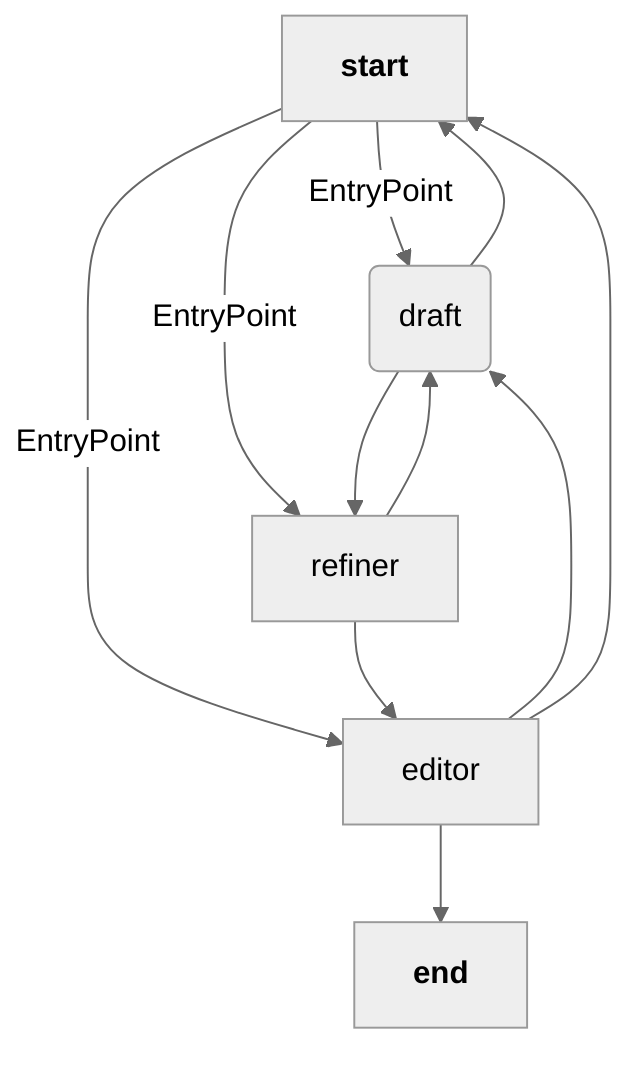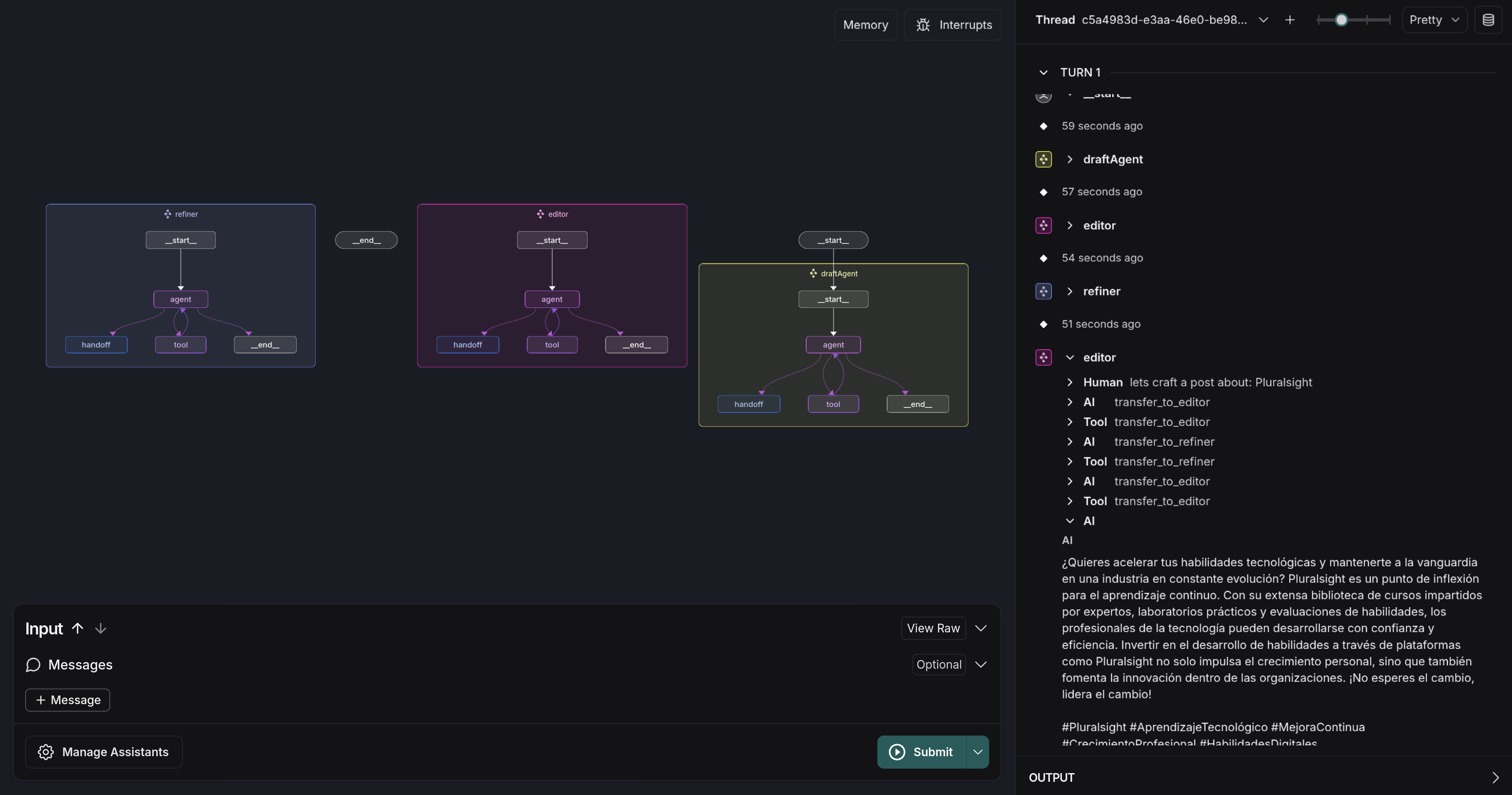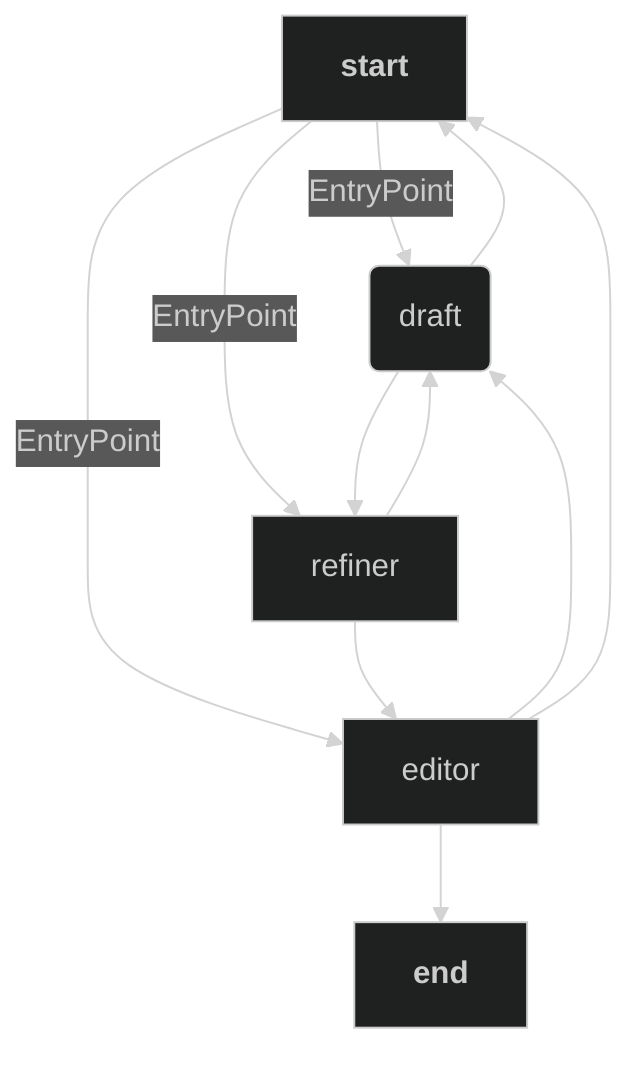Core Technologies
- • TypeScript - Type-safe development
- • LangChain - AI orchestration framework
- • LangGraph - Agent workflow management
- • Next.js - Frontend by LangChain team
Key Features
- • Never run out of content ideas
- • Quality control that ensures brand consistency
- • Automatic scheduling across
- • Secure account management
Agent Workflow

Your Personal Content Dream Team
Built for creators, designed for growth.
Our AI agents don’t just respond, they coordinate and work with you. Behind the scenes, we’ve built a custom multi-agent architecture where each agent plays a specific role in your content pipeline (like Strategist, Writer, and Editor). Instead of clunky one-shot prompts or rigid chains, they communicate by handing off tasks, just like a real team would.
Agents That Work Together
When one agent finishes its job, it passes the task to the next with a complete explanation of:
- What it did
- Why it made certain choices
- What the next agent should focus on
Think of it like Slack for AI — but fully automated and structured.
This lets our agents:
- Collaborate without stepping on each other
- Make better decisions using full brand context
- Easily plug in or swap roles without breaking the system
Never Explain Your Brand Again
Your AI team learns your brand once and remembers forever. No more briefing new freelancers or explaining your voice for the hundredth time. Our brand memory system ensures:
- Every post sounds authentically you
- Consistent messaging that builds trust with your audience
- Content that evolves with your brand without losing its essence
- Scalable growth without sacrificing quality or personality
Intelligent Collaboration
Multiple AI specialists work together seamlessly—like having a creative team that never takes breaks.
Smart Automation
Advanced content creation with built-in quality checks ensures every post meets your standards.
Beautiful Interface
Intuitive dashboard built with modern design principles—manage your content empire effortlessly.

